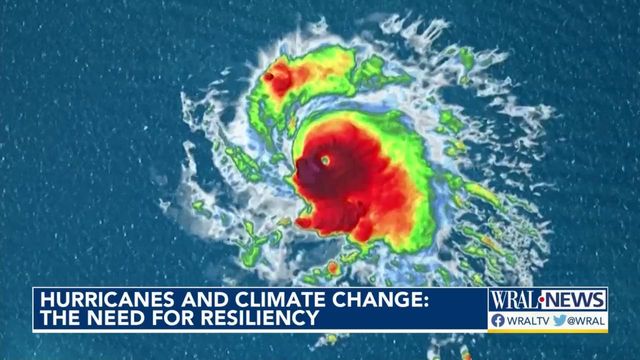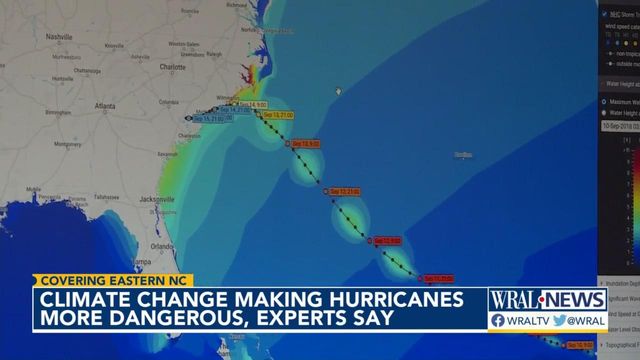Climate scientists worry as another above-average hurricane season quickly approaches
Researchers are already predicting that the 2022 Atlantic Hurricane Season will be an above-average active season. Climate change data shows that more areas are becoming resilient against these stronger, wetter and slower-moving storms.
Because scientists predict that slow storms will be the new norm, inland areas also need to be prepared, according to Rick Luttich, director of the University of North Carolina at Chapel Hill's Institute for Marine Sciences.
“All of the effects of the storms themselves seem like they are getting a bit worse with our changing climate, then you add on top of that sea-level rise, which again is driven by the climate change. So that brings the ocean water closer and closer to our doorstep," he said. "So a surge of six feet with sea-level rise is now a surge of seven feet and that could be the difference between it being at your house versus in your yard."
The coast already has some protection in place, like sand dunes, barrier islands, living shorelines and salt marshes.
“It’s a community effort, it’s a statewide effort. We may be spatially distant from inland but we are all connected within these watersheds," said Chris Baillie, climate adaptation coordinator for the Eastern North Carolina Sentinel Landscape.
Experts said that salt marshes often go unnoticed for their ability to act as speed bumps, slowing down large waves and storm surges that hurricanes can bring.
“It can knock down wave energy by as much as 50% to 80%," said Baillie. "So by being behind a salt marsh, less of that storm surge is getting up onto land and flooding the infrastructure.”
Our forests and inland wetlands also play a crucial role in fighting the elements.
“When we see hurricanes like Florence that aren’t glancing [at a] blow ... that dumped up to 30 inches of rain as it sat as a system over our coast," he said. "That is where our natural lands, particularly our wetlands are so important. An acre of wetland can store up to 330,000 gallons of water.”
Local governments are looking at how they can implement resiliency strategies now and in the future.
“There is an unprecedented investment in resilience-focused projects particularly those that use natural and nature-based solutions so using the natural habitats, the salt marsh, the seagrass, the oysters, dunes," Luttich said.
Luttich worries that as more people move to the North Carolina coast, and the frequency and intensity of storms increases, more damage and loss of life will occur if we can't "figure out ways to be resilient and live with these storms."
Being resilient to storms is not something just governments can do. Adding a rain barrel or creating your own rain garden can dramatically reduce flooding and the amount of stormwater runoff in your own yard and neighborhood.











